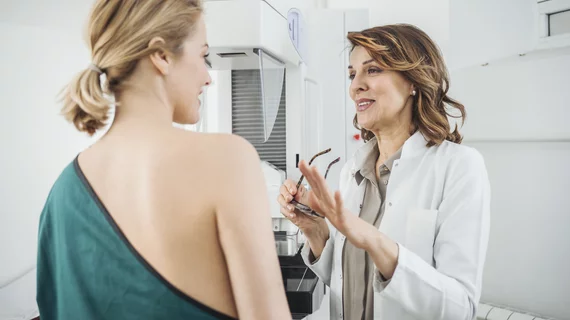Screening recommendations are disputed, so when are women actually starting their annual mammograms?
There are varying age recommendations for when women should begin mammographic screenings, but at what age do most women actually begin undergoing yearly mammograms and why?
That’s exactly what researchers sought to understand recently when they analyzed thousands of survey responses from a 2018 National Health Interview Survey. The responses of 1,948 women aged 40 to 49 were detailed recently in Academic Radiology, where the researchers offered detailed insight into what factors influence women at average risk of breast cancer to seek screening at certain ages.
“Over the past 40 years, a 10-37% decline in breast cancer specific mortality has been observed in the United States due to screening mammography utilization and advances in breast cancer treatment,” corresponding author of the paper Randy C. Miles, MD, MPH, Chief of Breast Imaging at Denver Health Medical Center in Colorado, and co-authors wrote. “While there is consensus among national health organizations that mammographic screening in average-risk women is overall beneficial, key differences exist related to recommended age to initiate screening and frequency of routine screening.”
Out of the nearly 2,000 respondents, 46.6% reported having undergone a screening mammogram within a year of the survey, while 61.4% had received a mammogram within a two-year timeframe. Reasons for not having completed a mammogram for the small percentage of women who didn’t were due to overlooking the exam, the lack of a presumed need for screening due to “being too young,” doctors not ordering the exam and health insurance/price constraints.
The experts suggested that at the patient level, many women are under informed about their breast cancer risks. On the provider level, they indicated an increase in shared decision-making could improve screening rates for this age demographic, adding that radiologists could play a greater role in keeping both patients and providers informed on the benefits of early screening. The authors wrote:
Radiologists may be key in addressing this issue among ambulatory care providers and patients, educating about the benefits and harms of screening younger women, particularly in racial/ethnic minorities and uninsured patients, who experience additional barriers to care and SDM discussions.”
The study abstract can be viewed here.

